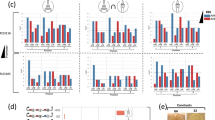Abstract
Recruiting complex metabolic reaction networks for chemical synthesis has attracted considerable attention but frequently requires optimization of network composition and dynamics to reach sufficient productivity. As a design framework to predict optimal levels for all enzymes in the network is currently not available, state-of-the-art pathway optimization relies on high-throughput phenotype screening. We present here the development and application of a new in vitro real-time analysis method for the comprehensive investigation and rational programming of enzyme networks for synthetic tasks. We used this first to rationally and rapidly derive an optimal blueprint for the production of the fine chemical building block dihydroxyacetone phosphate (DHAP) via Escherichia coli's highly evolved glycolysis. Second, the method guided the three-step genetic implementation of the blueprint, yielding a synthetic operon with the predicted 2.5-fold–increased glycolytic flux toward DHAP. The new analytical setup drastically accelerates rational optimization of synthetic multienzyme networks.
This is a preview of subscription content, access via your institution
Access options
Subscribe to this journal
Receive 12 print issues and online access
$259.00 per year
only $21.58 per issue
Buy this article
- Purchase on Springer Link
- Instant access to full article PDF
Prices may be subject to local taxes which are calculated during checkout




Similar content being viewed by others
References
Anderson, J.C., Clarke, E.J., Arkin, A.P. & Voigt, C.A. Environmentally controlled invasion of cancer cells by engineered bacteria. J. Mol. Biol. 355, 619–627 (2006).
Yokobayashi, Y., Weiss, R. & Arnold, F.H. Directed evolution of a genetic circuit. Proc. Natl. Acad. Sci. USA 99, 16587–16591 (2002).
Pfleger, B.F., Pitera, D.J., Smolke, C.D. & Keasling, J.D. Combinatorial engineering of intergenic regions in operons tunes expression of multiple genes. Nat. Biotechnol. 24, 1027–1032 (2006).
Anthony, J.R. et al. Optimization of the mevalonate-based isoprenoid biosynthetic pathway in Escherichia coli for production of the anti-malarial drug precursor amorpha-4,11-diene. Metab. Eng. 11, 13–19 (2009).
Salis, H.M., Mirsky, E.A. & Voigt, C.A. Automated design of synthetic ribosome binding sites to control protein expression. Nat. Biotechnol. 27, 946–950 (2009).
Alper, H., Fischer, C., Nevoigt, E. & Stephanopoulos, G. Tuning genetic control through promoter engineering. Proc. Natl. Acad. Sci. USA 102, 12678–12683 (2005).
Hadlich, F., Noack, S. & Wiechert, W. Translating biochemical network models between different kinetic formats. Metab. Eng. 11, 87–100 (2009).
Kotte, O., Zaugg, J.B. & Heinemann, M. Bacterial adaptation through distributed sensing of metabolic fluxes. Mol. Syst. Biol. 6, 355 (2010).
Wang, H.H. et al. Programming cells by multiplex genome engineering and accelerated evolution. Nature 460, 894–898 (2009).
Linshiz, G. et al. Recursive construction of perfect DNA molecules from imperfect oligonucleotides. Mol. Syst. Biol. 4, 191 (2008).
Bennett, M.R. & Hasty, J. Microfluidic devices for measuring gene network dynamics in single cells. Nat. Rev. Genet. 10, 628–638 (2009).
El Massaoudi, M., Spelthahn, J., Drysch, A., de Graaf, A. & Takors, R. Production process monitoring by serial mapping of microbial carbon flux distributions using a novel sensor reactor approach: I–Sensor reactor system. Metab. Eng. 5, 86–95 (2003).
Buziol, S. et al. New bioreactor-coupled rapid stopped-flow sampling technique for measurements of metabolite dynamics on a subsecond time scale. Biotechnol. Bioeng. 80, 632–636 (2002).
Büscher, J.M., Czernik, D., Ewald, J.C., Sauer, U. & Zamboni, N. Cross-platform comparison of methods for quantitative metabolomics of primary metabolism. Anal. Chem. 81, 2135–2143 (2009).
Bennett, B.D. et al. Absolute metabolite concentrations and implied enzyme active site occupancy in Escherichia coli. Nat. Chem. Biol. 5, 593–599 (2009).
van den Brink, J. et al. Dynamics of glycolytic regulation during adaptation of Saccharomyces cerevisiae to fermentative metabolism. Appl. Environ. Microbiol. 74, 5710–5723 (2008).
van Eunen, K. et al. Measuring enzyme activities under standardized in vivo-like conditions for systems biology. FEBS J. 277, 749–760 (2010).
Woodward, J., Orr, M., Cordray, K. & Greenbaum, E. Biotechnology: Enzymatic production of biohydrogen. Nature 405, 1014–1015 (2000).
Jewett, M.C., Calhoun, K.A., Voloshin, A., Wuu, J.J. & Swartz, J.R. An integrated cell-free metabolic platform for protein production and synthetic biology. Mol. Syst. Biol. 4, 220 (2008).
Shimizu, Y. et al. Cell-free translation reconstituted with purified components. Nat. Biotechnol. 19, 751–755 (2001).
Zhang, Y.H.P., Evans, B.R., Mielenz, J.R., Hopkins, R.C. & Adams, M.W.W. High-yield hydrogen production from starch and water by a synthetic enzymatic pathway. PLoS ONE 2, e456 (2007).
Bujara, M., Schümperli, M., Billerbeck, S., Heinemann, M. & Panke, S. Exploiting cell-free systems: Implementation and debugging of a system of biotransformations. Biotechnol. Bioeng. 106, 376–389 (2010).
Chen, H. & Zenobi, R. Neutral desorption sampling of biological surfaces for rapid chemical characterization by extractive electrospray ionization mass spectrometry. Nat. Protoc. 3, 1467–1475 (2008).
Zhu, L. et al. Real-time, on-line monitoring of organic chemical reactions using extractive electrospray ionization tandem mass spectrometry. Rapid Commun. Mass Spectrom. 22, 2993–2998 (2008).
Schümperli, M., Pellaux, R. & Panke, S. Chemical and enzymatic routes to dihydroxyacetone phosphate. Appl. Microbiol. Biotechnol. 75, 33–45 (2007).
Ehlde, M. & Zacchi, G. Influence of experimental errors on the determination of flux control coefficients from transient metabolite concentrations. Biochem. J. 313, 721–727 (1996).
Kummel, A., Panke, S. & Heinemann, M. Putative regulatory sites unraveled by network-embedded thermodynamic analysis of metabolome data. Mol. Syst. Biol. 2, 2006.0034 (2006).
Jamshidi, N. & Palsson, B.A. Top-down analysis of temporal hierarchy in biochemical reaction networks. PLOS Comput. Biol. 4, e1000177 (2008).
Chassagnole, C., Noisommit-Rizzi, N., Schmid, J.W., Mauch, K. & Reuss, M. Dynamic modeling of the central carbon metabolism of Escherichia coli. Biotechnol. Bioeng. 79, 53–73 (2002).
Teusink, B., Walsh, M.C., van Dam, K. & Westerhoff, H.V. The danger of metabolic pathways with turbo design. Trends Biochem. Sci. 23, 162–169 (1998).
Emmerling, M., Bailey, J.E. & Sauer, U. Altered regulation of pyruvate kinase or co-overexpression of phosphofructokinase increases glycolytic fluxes in resting Escherichia coli. Biotechnol. Bioeng. 67, 623–627 (2000).
Meyer, D., Schneider-Fresenius, C., Horlacher, R., Peist, R. & Boos, W. Molecular characterization of glucokinase from Escherichia coli K-12. J. Bacteriol. 179, 1298–1306 (1997).
Cho, B.-K. et al. The transcription unit architecture of the Escherichia coli genome. Nat. Biotechnol. 27, 1043–1049 (2009).
Güell, M. et al. Transcriptome complexity in a genome-reduced bacterium. Science 326, 1268–1271 (2009).
Sharma, C.M. et al. The primary transcriptome of the major human pathogen Helicobacter pylori. Nature 464, 250–255 (2010).
Holtz, W.J. & Keasling, J.D. Engineering static and dynamic control of synthetic pathways. Cell 140, 19–23 (2010).
Gibson, D.G. et al. Enzymatic assembly of DNA molecules up to several hundred kilobases. Nat. Methods 6, 343–345 (2009).
Fell, D. Understanding the Control of Metabolism (Portland Press, London, UK, 1997).
Stephanopoulos, G., Aristidou, A.A. & Nielsen, J. Metabolic Engineering–Principles and Methodologies (Academic Press, London, UK, 1998).
Delgado, J. & Liao, J.C. Determination of flux control coefficients from transient metabolite concentrations. Biochem. J. 282, 919–927 (1992).
Delgado, J. & Liao, J.C. Metabolic control analysis using transient metabolite concentrations. Determination of metabolite concentration control coefficients. Biochem. J. 285, 965–972 (1992).
Acknowledgements
We would like to thank N. Zamboni, U. Sauer, M. Oldiges and C. Wandrey for help with MS analyses. This work was supported by the EU-FP6 projects EUROBIOSYN and NANOMOT.
Author information
Authors and Affiliations
Contributions
M.B. did the experiments and analyzed the data and wrote the manuscript with S.P., who also supervised the work. R.P. and M.S. helped to construct the setup, and M.H. supervised part of the work.
Corresponding author
Ethics declarations
Competing interests
The authors declare no competing financial interests.
Supplementary information
Supplementary Text and Figures
Supplementary Methods, Supplementary Figures 1–11 and Supplementary Tables 1–5 (PDF 2301 kb)
Rights and permissions
About this article
Cite this article
Bujara, M., Schümperli, M., Pellaux, R. et al. Optimization of a blueprint for in vitro glycolysis by metabolic real-time analysis. Nat Chem Biol 7, 271–277 (2011). https://doi.org/10.1038/nchembio.541
Received:
Accepted:
Published:
Issue Date:
DOI: https://doi.org/10.1038/nchembio.541
This article is cited by
-
The Use of Cell-free Protein Synthesis to Push the Boundaries of Synthetic Biology
Biotechnology and Bioprocess Engineering (2023)
-
Cell-free gene expression: an expanded repertoire of applications
Nature Reviews Genetics (2020)
-
A combined experimental and modelling approach for the Weimberg pathway optimisation
Nature Communications (2020)
-
In vitro multi-enzymatic cascades using recombinant lysates of E. coli: an emerging biocatalysis platform
Biophysical Reviews (2020)
-
Forward design of a complex enzyme cascade reaction
Nature Communications (2016)



